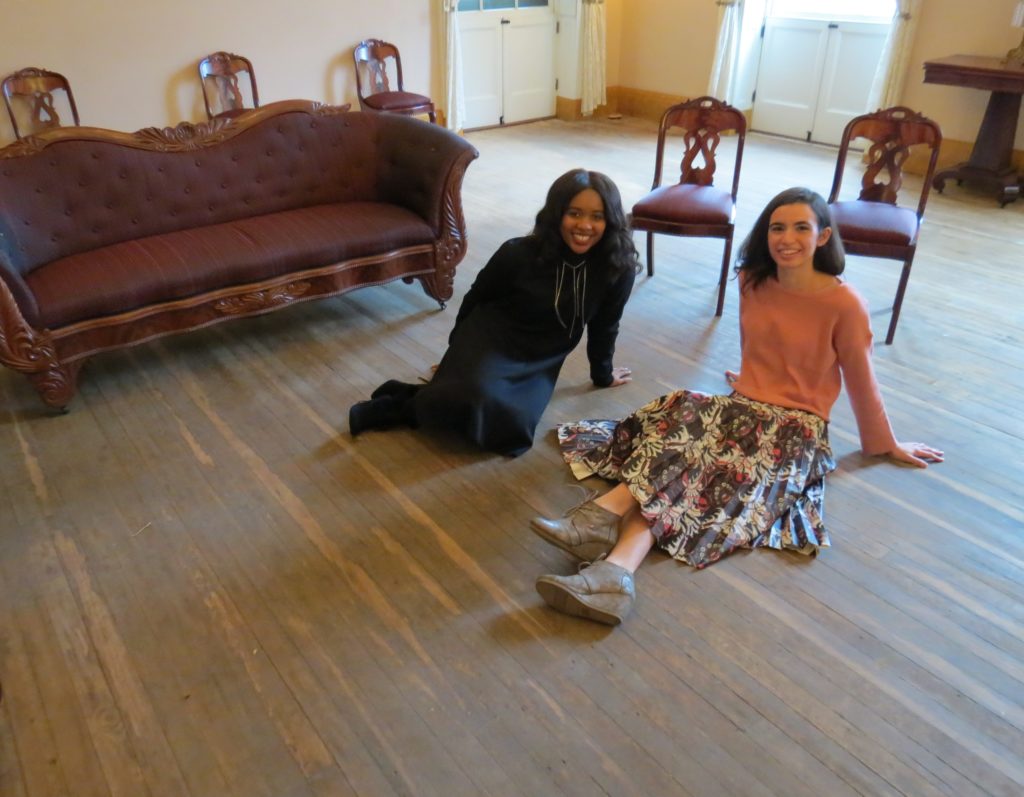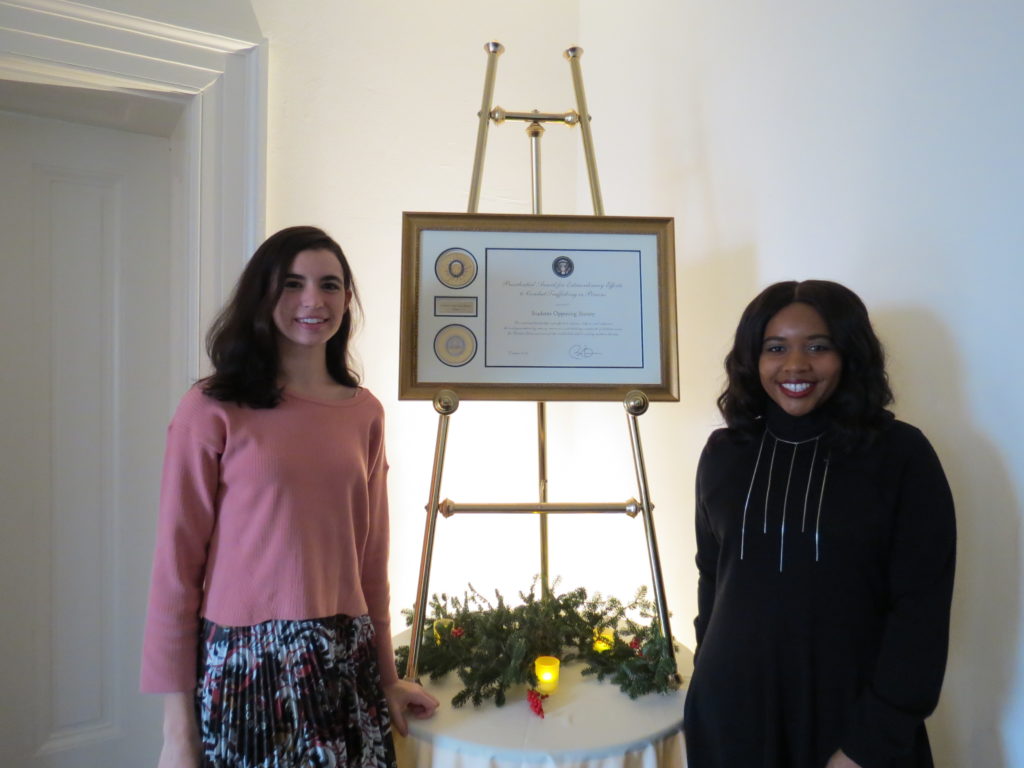By Jessica Seidenberg
The things that we own and create can be so beautiful — every object is art and the ability to see that beauty is an art itself. But a component of the beauty that our material goods possess is in how they are created. The knowledge that they have been created by the forced and needless suffering of another human being seems to visibly tarnish these objects. The colorful handmade tapestries from the other side of the world no longer seem to express such easy and careless joy. Cheap chocolate bars invoke more than just simple images of sweetness and indulgence. And on a note that is closer to home in the U.S., buildings that are some of our greatest symbols of freedom, like the Capitol and the White House, become less exceptional, less virtuous.
As a participant of Students Opposing Slavery, President Lincoln’s Cottage is a very important place to me. It is an enduring symbol of one of the great presidents whose influence continues to shape our country. However, like the things and places listed above, it is also a constant reminder that the cruelties of slavery are not a thing of the past. Just over 150 years ago, President Lincoln spoke of our unfinished work as a people to create world where it is “held to be self-evident, that all men are created equal”. When he gave the Gettysburg Address, Lincoln was referring to the enslavement of black Americans. When he spoke of “unfinished work,” however, Lincoln knew that freedom and equality were things that would not be achieved by the 13th Amendment. The 13th Amendment has only been a step, towards that goal to actualize the “nation, conceived in liberty.”
President Lincoln’s Cottage taught me and many of my fellow SOS participants that President Lincoln’s legacy is one that we must continue to work for.
Currently, the Cottage is in the midst of a campaign to replace the carpet in the first floor of the house. The current carpet is a hand-woven coconut mat, similar to the one that was spread in the Cottage in Lincoln’s time. However, as Cottage staff shared with SOS participants at the annual SOS International Summit, the supply chain behind the production of this carpet is unknown. Thus, there is no way to know that its production was free of forced labor.
In purchasing the new carpet, President Lincoln’s Cottage is working to show that it does not wish just to share the values of Lincoln’s legacy, but to uphold them as well. In doing so, President Lincoln’s Cottage is working with GoodWeave, an organization that certifies fair trade carpets. However, a fair trade carpet is not only significantly more expensive, it is also less historically accurate in its appearance.
I have always understood the value of historical accuracy. However, attending the SOS Summit has helped me also understand that historical accuracy and ethical practice can clash. In a memorial to history, authenticity is important. At the same time, Lincoln spoke of being dedicated to unfinished work, and that work is rarely easy; its purpose never leaves things looking the same as before. By doing the work to obtain this carpet, President Lincoln’s Cottage is tangibly reminding its visitors that fighting for freedom was never simple and it definitely wasn’t free. During the Civil War, soldiers in our country cared enough about the freedom that this country stands for, that they were willing to fight for it with weapons. As I have learned through SOS, our fight for freedom today is largely dictated by the choices we make with our purchases. The dedication and work that President Lincoln’s Cottage must put in to purchase a fair trade carpet shows that we cannot pay attention to the fight against modern only slavery only when it seems easy.
Lastly, and most importantly, as I have come to appreciate via my involvement with President Lincoln’s Cottage, a memorial is never just for the sake of maintaining a specific time period. Its purpose is to preserve and uphold the memory of the person it was created for. In purchasing a fair trade carpet, President Lincoln’s Cottage is showing that it is willing to uphold historical accuracy by attending, not simply to the appearance of the articles that decorate the cottage, but to the legacy of the person whose history is being remembered.
Jessica Seidenberg has been a participant in Students Opposing Slavery since 2014 and co-lead her high school’s SOS chapter for several years where she organized school-wide initiatives to raise awareness of modern day slavery among her classmates. She is currently a sophomore at the College of William and Mary, majoring in neuroscience.


